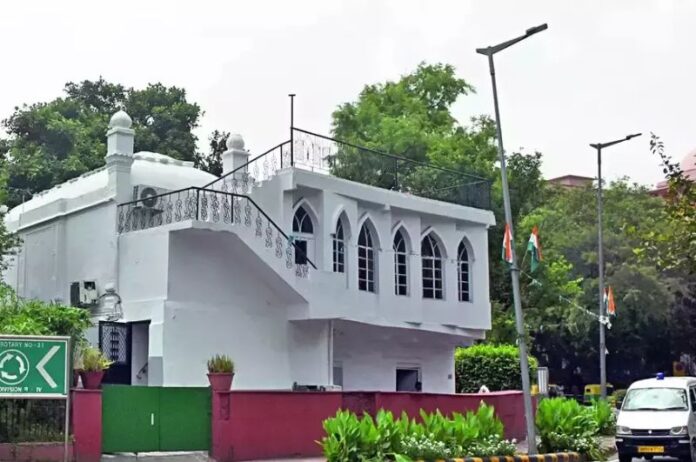The Historical Context of Sunehri Bagh Mosque
In the early 20th century, the British government, aiming to construct the city of New Delhi, acquired land around Raisina, which included the Qutub Road area. This road, lined with gardens like Sunehri Bagh, had a mosque within its premises. The British tasked the Archaeological Survey of India with listing historic buildings along this road to decide which ones to preserve or demolish.
Preservation Amidst New Development
Ultimately, the British actively selected specific structures for preservation due to their historical or architectural importance, including Jantar Mantar, Humayun’s Tomb, and notably, the mosque in Sunehri Bagh. This decision was not solely based on the buildings’ historic value; their continuous use also played a crucial role. Consequently, the planners skillfully incorporated the mosque and other religious sites into New Delhi’s innovative town plan.
The Architectural Integration in New Delhi
The Sunehri Bagh mosque’s location on a roundabout reflects the British planners’ approach to incorporating existing historic structures into the new city’s design. The street plan, characterised by radial roads and roundabouts, was laid out considering these pre-existing landmarks. Edwin Lutyens, a key figure in the city’s planning, acknowledged the role of Viceroy Charles Hardinge in incorporating these historic elements.
Political Implications and Contemporary Significance
The decision to preserve historical structures, furthermore, was a crucial part of the British government’s attempt to rebrand its image from the one established in Calcutta. In seeking a connection with Indian history, the Sunehri Bagh mosque on its roundabout signifies New Delhi’s layered history. Moreover, the city’s unique town plan, characterised by low-density development and abundant greenery, not only provides much-needed respite from the metropolis’s air pollution issues but also enhances its overall charm.



